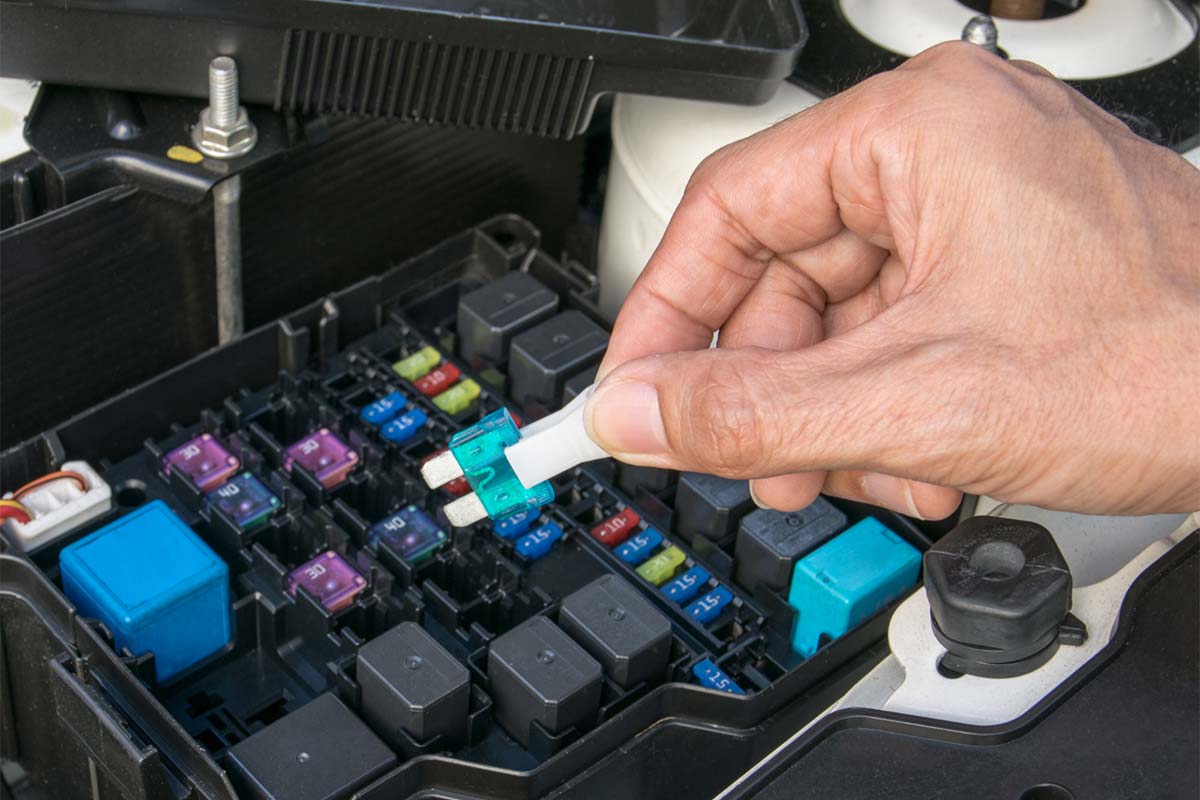Car fuses are the unsung heroes in your vehicle's electrical system. Each one protects a circuit in your car by sacrificing itself when there's an electrical fault, keeping electrical components safe. Whenever a fuse blows or burns, you must replace it immediately.
All fuses are located inside your car’s main fuse box, where you’ll find a diagram to help you identify each fuse quickly. Remove and inspect the fuse you think has blown. If the fuse is burnt or melted, with the wire element inside broken, that means it’s blown and must be replaced.
Fuses are inexpensive and easy to replace if you know how. With this guide, you'll learn about locating and fixing blown fuses in your vehicle.
What's the Purpose of a Car Fuse?
Firstly, let’s do a quick recap about the purpose of a car fuse. Fuses are critical in keeping your car safe. They are small, easy to forget, and concealed in the fuse box, which gives you even more reason to learn about them.
Just like the electrical fuses you have around your home, the fuses in your car protect the electrical system. More specifically, each electrical circuit is protected by a fuse, and that's why your vehicle has many of them working simultaneously.
These protective devices destroy themselves when too much voltage flows through the circuit. A fuse blows up to stop the flow of electricity and prevent damage to any component drawing power from that circuit.
In other words, finding a blown car fuse means that there was an electrical fault (likely a voltage surge), and the fuse fulfilled its purpose of protecting the affected circuit.
So, aside from replacing the fuse with a new one, you must also troubleshoot your vehicle for the root cause behind that electrical fault. Otherwise, the same problem will happen again to the replacement fuse you put in.
Why Do Car Fuses Blow?
A fuse blows to protect an electrical circuit, but what triggers it?
Firstly, a fuse can blow if it's not installed correctly. For example, you might have installed a fuse with an amperage higher than the old one. That can cause problems that trigger the new fuse to blow.
Besides that, a short circuit is the most common reason for blown fuses in a car. That happens when there’s a poor connection between two conductors, causing the electrical circuit to overload.
Short circuits in cars typically happen for the following reasons:
- Frayed wiring: All modern cars have incredibly long wires running through the vehicle like veins in a human body. The insulation on those wires can disintegrate after many years. Exposed wires can touch the car’s metal frame and cause a short circuit that blows fuses.
- Component malfunction: Short circuits can also happen when your electrical components malfunction. For example, an electrical problem in your car’s radio can overload its circuit and blow its fuse.
- Exposed conductor: Wiring or other materials that conduct electricity will experience short circuits when exposed to rainwater or leaking automotive fluids.
Again, the fuses are sacrificial components that are purposely there to protect the vehicle and its occupants.
How Do You Locate a Blown Fuse?
You don't have to search all over your car for a blown fuse because all the fuses are kept in the main fuse box.
Step 1: Look for Malfunctioning Accessories or Components
Firstly, look inside your vehicle to find any electrical component that isn’t functioning correctly. There are several reasons why a component malfunctions, but one of those is a blown fuse.
Step 2: Search the Main Fuse Box
Then, you must locate the main fuse box in your vehicle. It’s typically somewhere underneath the dashboard or inside the engine bay. You can refer to the car owner’s manual to locate that box.
You’ll also find a diagram inside the fuse box that helps you identify each fuse. Find the one that corresponds to the malfunctioning component or accessory you identified earlier.
Step 3: Remove and Inspect the Fuse
If you’re wondering how to remove a car fuse, that’s simple. You only need to pull it straight out. You can do it by hand, though it's best done with pliers or pullers designed for use with fuses.
Next, inspect the fuse closely. A blown fuse will have a burned or melted wire element inside it, meaning you cannot use it anymore.
Remember that more than one fuse can blow simultaneously. So, it’s worth inspecting some of the other fuses while you’re at the main fuse box.
Can You Fix a Blown Fuse?
Electrical fuses are disposable. In other words, they’re not repairable or serviceable, but you can replace them.
The easy part is putting the fuse in, as you only need to push it into the holder the same way as the old one.
However, the more challenging part is identifying the correct fuse to use. The best thing for you to do is purchase an identical replacement with the same amperage level to avoid any problems.
Car fuses are inexpensive, so keeping a few replacements around is an excellent idea. You can purchase them in kits online or at your favourite automotive supply shop. Check out CarpartAU and its Directory to find local automotive stores in your area!
By Ray Hasbollah

